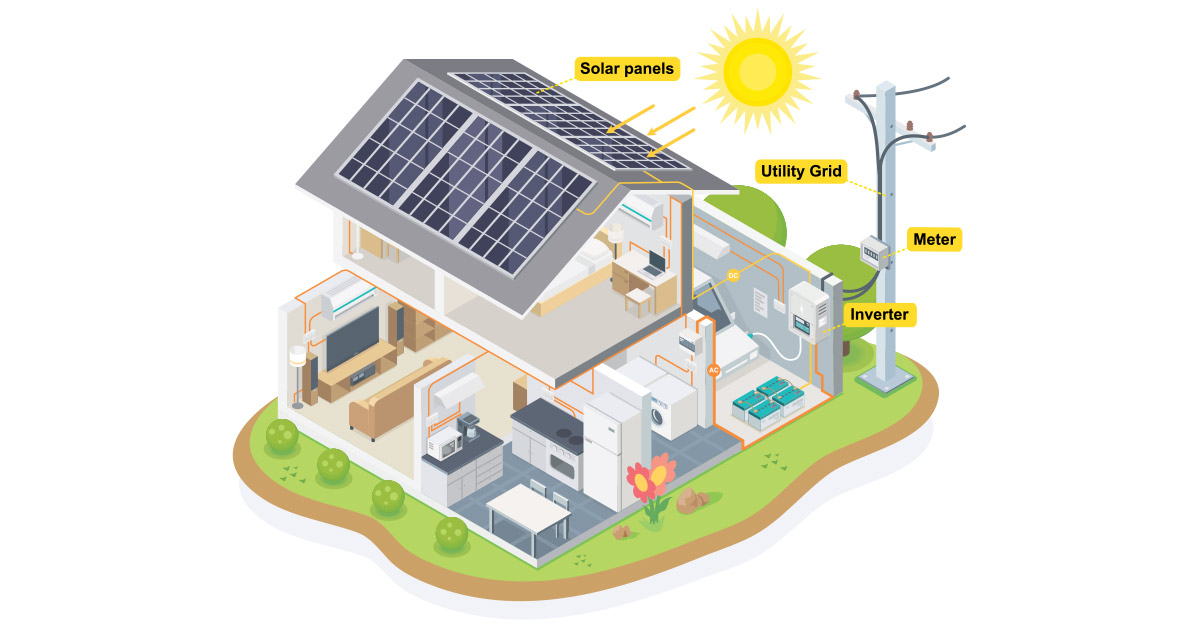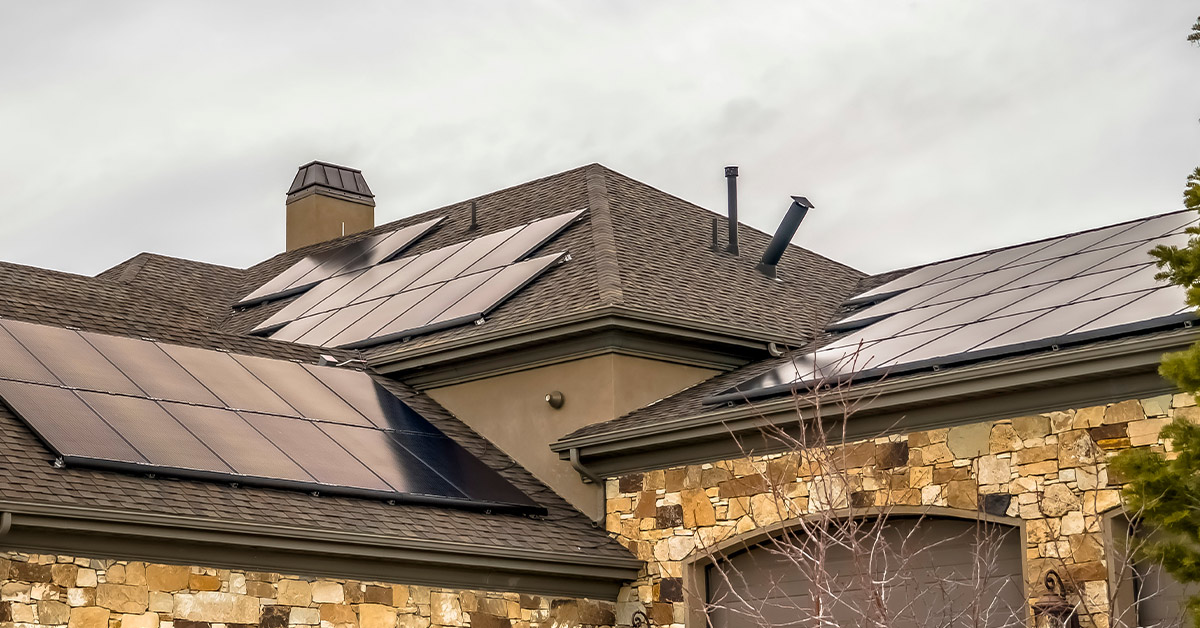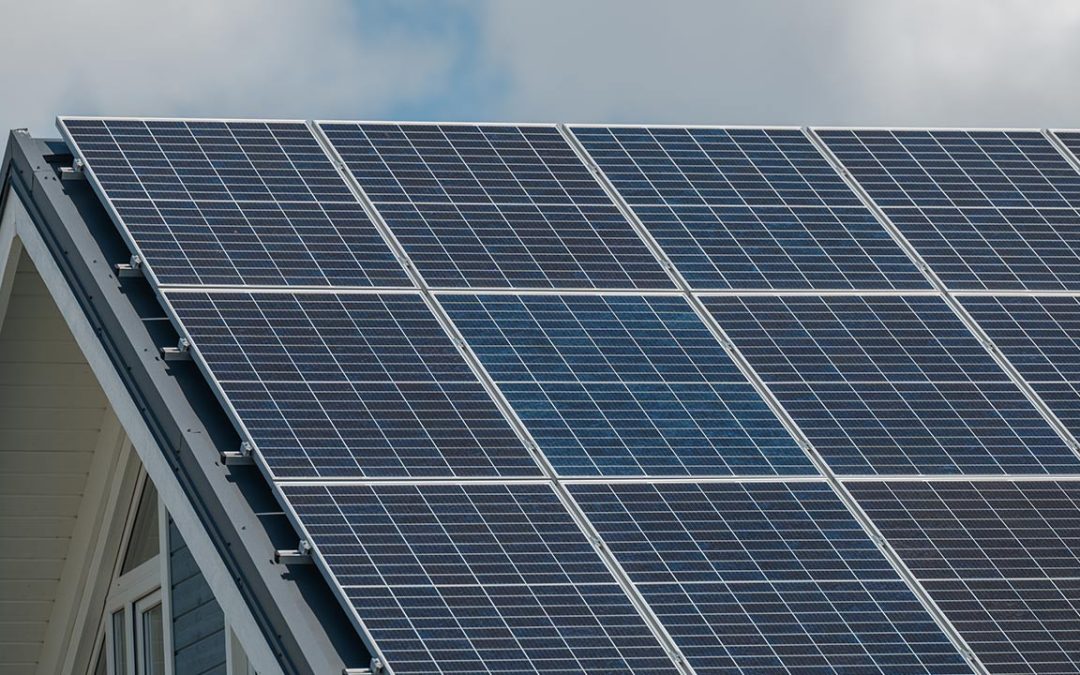Solar energy is the future of the planet. Converting sunlight into power for our homes, businesses, and communities, solar energy is a powerful solution in the face of climate change that severs our dependence on fossil fuels. But how exactly does solar energy power our communities, and how is it better than using coal or natural gas to generate electricity? Our team of experts at Trinity Wiring Solutions has compiled a guide to how solar panels operate.
What do We Mean by Solar Energy?
The sun emits electromagnetic radiation in the form of light (photons) across the globe, although the light level varies depending on the location. Solar technologies capture this radiation and convert it to energy. Unlike gas or coal, solar radiation is an infinite source of energy. Approximately 173,000 terawatts of solar energy blanket the Earth at any given time, which is over 10,000 times our total energy needs if we could capture all of it.
The Solar System
Sunlight Hits the Solar Panels
Solar panels are comprised of solar photovoltaic cells, which are made of silicon wafers like those in computer chips. The top and bottom silicon layers contain negative and positive charges respectively, which create an electric field like in a battery. These are assembled into solar modules, which are connected to solar panels. They produce electricity, or voltage, from the sun’s energy in a process known as the photovoltaic effect. When light (photons) impact a solar cell, electrons are knocked loose from their atoms, the electric field pushes that electron out of the silicon junction, and a flow of electricity results. The more solar panels you deploy, the more energy you can generate.

Electricity Moves Through the Inverter
Solar panels create direct current (DC) energy, while our homes run on alternating current (AC) energy because it is less expensive to transmit across long distances on the U.S. electrical power grid. To transform DC to AC, the electricity is sent to an inverter, which could be considered the brain of the system. The inverter also offers ground fault protection and system statistics like the voltage, current, maximum power point tracking, and energy production. After the AC electricity leaves the inverter, it moves to the building’s electrical panel so it can power lights and appliances within the structure.
Central inverters, which control the overall solar system, dominate the industry, but the recent introduction of micro-inverters allows for the optimization of individual solar panels, allowing them to perform at maximum potential. With a central inverter, an issue with a single panel could lower the performance of the entire array.
Distribute Excess Electricity via the Grid
Solar panels generate more electricity than many homes need. The excess power is measured by an electricity meter as it enters the grid. However, if you’re worried about running out of power at night, or you aren’t at home to use the electricity your panels generated during the daytime, there’s no reason for concern. A system called “net metering” accounts for the energy sent and received from the grid. This means for every kilowatt-hour (kWh) of power a solar system sends to the grid, homeowners can receive credits to draw energy from the grid at night or on cloudy days.
Furthermore, Trinity Wiring Solutions can add storage to your solar system to further enhance those benefits. By storing more energy on-site, you reduce your reliance on the grid and preserve the ability to power your home in case of power outages. Some storage systems are equipped with software that monitors home energy use, solar production, and utility rates to optimize which power sources to use at any given time.

How Does Weather Affect Solar Energy?
Weather conditions can have an impact on how much electricity a solar system creates, but not how you may think. A sunny day is clearly the ideal weather for generating solar energy, but solar panels, like most electronics, operate more efficiently in cooler weather than in warm weather. This means solar panels will generate more electricity in the same amount of time, but rising temperatures cause the panels to operate at a lower efficiency. Although solar panels are more efficient in cooler weather, this doesn’t mean they are more productive in wintertime. Sunny, cloudless conditions are more common in the warm summer months, so although the panels may work slower, they will likely continue producing more electricity in the summer than in the winter.
The Future of Solar
Other types of solar power technology exist, such as solar thermal and concentrated solar power (CSP), that operate differently from photovoltaic solar panels. But they all use the power of the sun to generate electricity or heat water or air. Currently, photovoltaic power accounts for only three percent of the energy produced in the United States. The technology continues to improves, investment costs are dropping, and more people are becoming attuned to the future of solar. If you’re ready to bring the power and benefits of solar technology to your home, contact Trinity Wiring Solutions today to get started!
